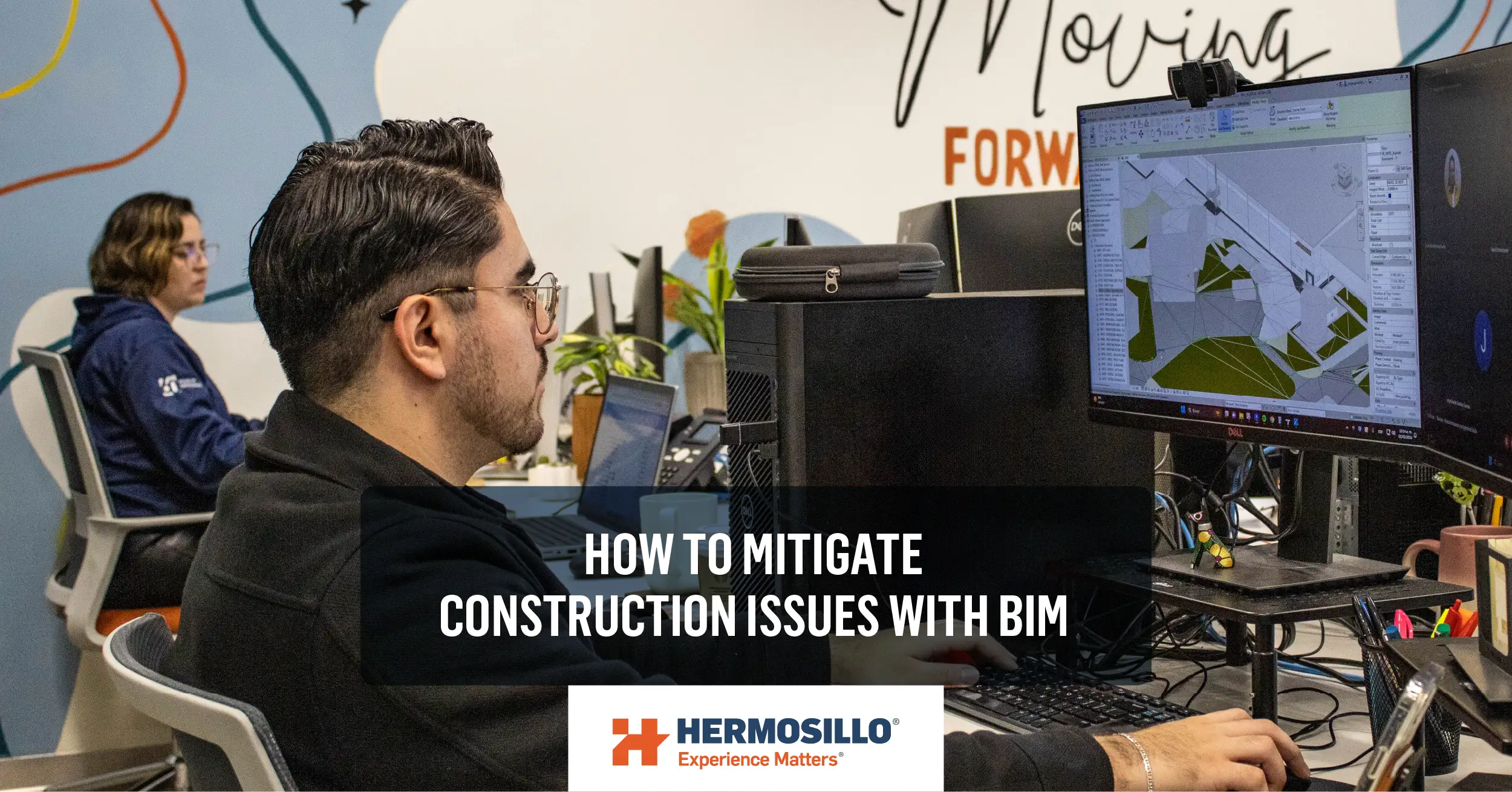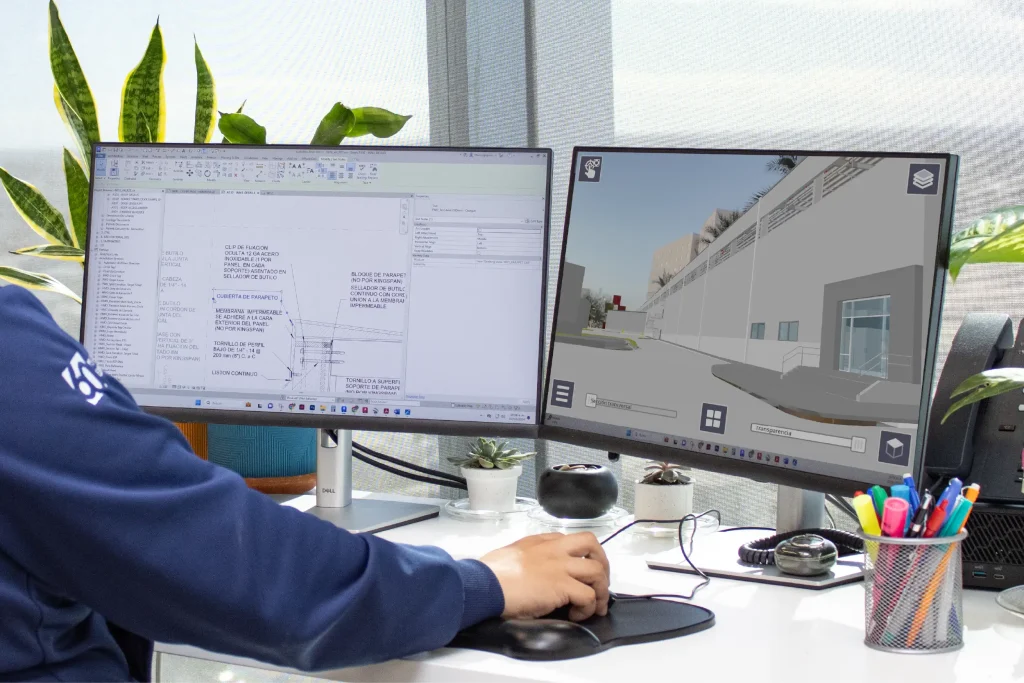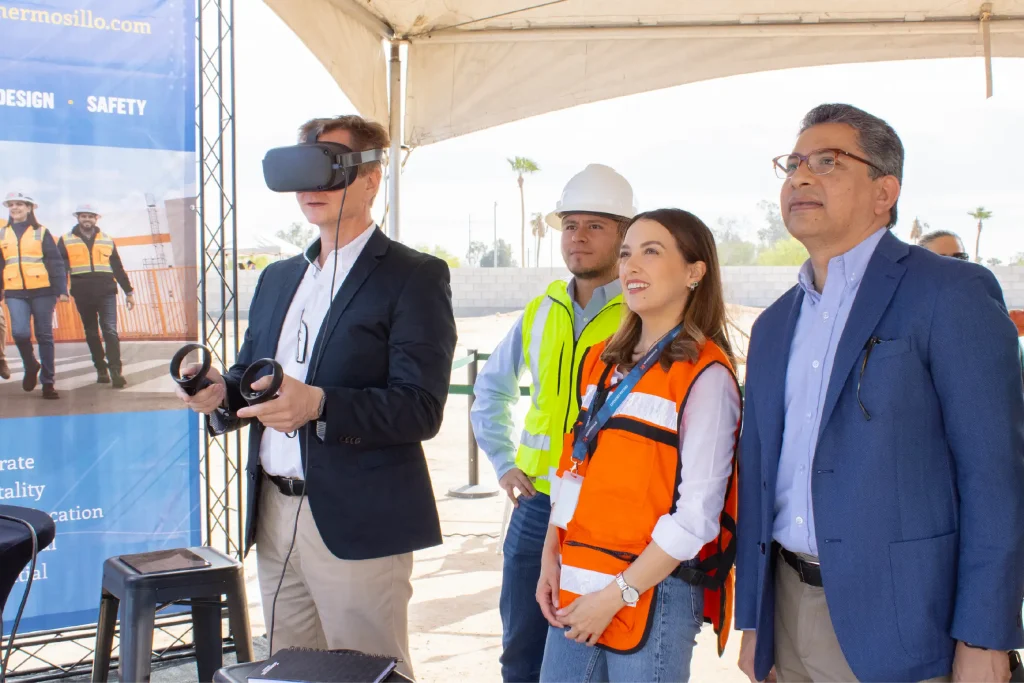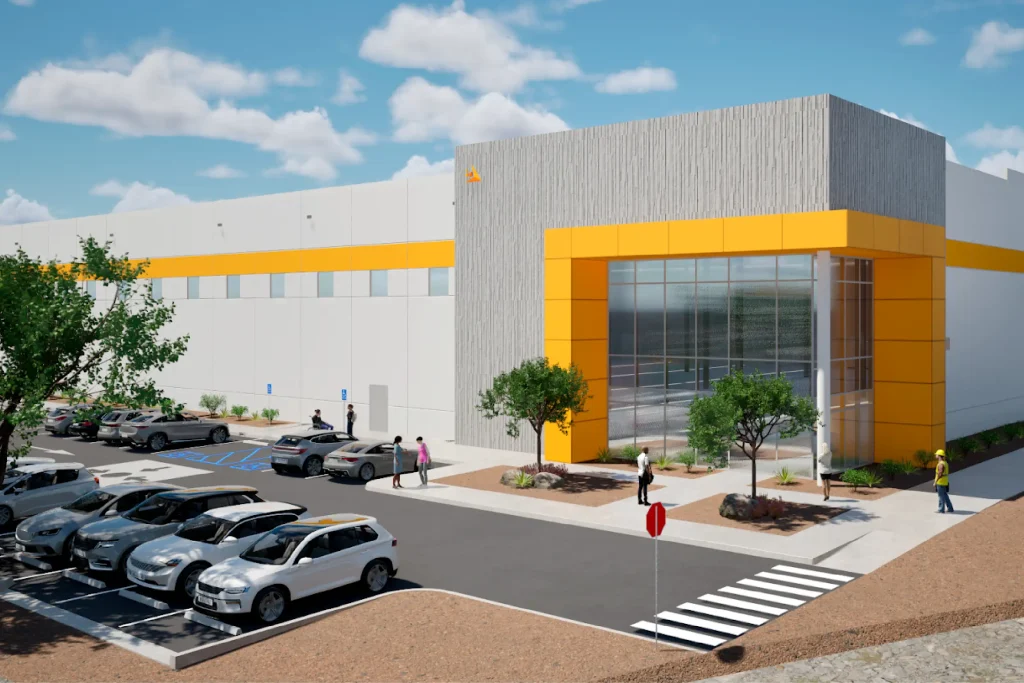
In the construction industry, on-site challenges are a constant reality: coordination errors, outdated documentation, discipline clashes, and logistical issues can lead to cost overruns, delays, and inefficiencies. That’s why at Hermosillo, we embrace technological innovation as a key tool to stay ahead of these challenges. In particular, Building Information Modeling (BIM) has become one of our main strategies to plan, coordinate, and execute projects with greater precision.
Thanks to this methodology, we can better manage available resources, optimize material usage, and control the total cost of a project from early stages. This enhances operational efficiency and allows us to work collaboratively in a virtual environment and offer more competitive solutions in the sector.
By using BIM, we not only prevent costly mistakes but also optimize our processes and provide clients with a more efficient, transparent experience, supported by accurate data for decision-making.
1. Preventing mistakes before construction begins
One of the greatest advantages of BIM is the ability to “build virtually before building physically.” This means that before a project reaches the construction phase, we can simulate every detail digitally to ensure everything fits properly and is ready for execution.
By working with 3D digital models, we can anticipate potential clashes, optimize resource usage, and reduce rework or construction errors costs.
This capability is especially valuable in construction, where precise planning directly impacts final outcomes. Moreover, by identifying potential risks early, we enhance collaboration and improve job site safety—protecting both the people and the processes involved.
Here are some of the main issues BIM helps us prevent:
- Clash detection between disciplines: Thanks to collaborative 3D modeling, we can detect conflicts in advance between electrical, mechanical, special systems, and structural installations. This avoids field issues, rework, and time losses—improving safety and reducing execution-related risks.
- Design or constructability issues: Digital simulation allows us to verify that every component meets the required clearances and identify incompatibilities between systems. It also helps determine if the design needs adjustments to be technically feasible. This accelerates decision-making and ensures technical viability from the early stages.
- Outdated documentation: One of the most common issues on-site is working with outdated plans or specifications. With BIM and a Common Data Environment, all stakeholders access a centralized, real-time updated model, ensuring the correct information is always available and minimizing risks associated with incorrect or incomplete documentation.
Detecting these issues during the design or preconstruction phase is essential, as changes made during this stage are much more cost-effective and easier to implement than during construction.
2. Accurate coordination and real-time collaboration
BIM is more than just a design tool—at Hermosillo, it’s a methodology that enhances our internal processes, streamlining collaboration through an integrated coordination platform that significantly improves communication among all project stakeholders.
Throughout each phase of the project—from design to execution and delivery—our Common Data Environment, Autodesk Construction Cloud (ACC), acts as a centralized database that supports informed, real-time decision-making.
We develop our models in Autodesk Revit and integrate them into Autodesk Construction Cloud with key documentation, technical data sheets, meeting minutes, approvals, and more. This allows us to:
- Ensure that all teams, including design, engineering, construction, supervision, and the client, work from the same set of plans, promoting alignment across the board.
- Provide greater traceability of decisions and approvals for the client, who can view the project status with full transparency.
- Facilitate clear communication with subcontractors, encouraging collaboration and avoiding misunderstandings that could lead to execution errors.
This integration improves internal coordination and boosts project quality throughout its life cycle—ensuring consistency, traceability, and ongoing collaboration. It also strengthens our relationships with clients, who appreciate the visibility and organization the Common Data Environment brings to the construction process.

3. Efficient planning and job site tracking
One of the most powerful features of BIM is its integration with project planning. Through what’s known as 4D Simulation, we can link the digital model with the construction schedule, enabling us to:
- Simulate each stage of the construction process in advance
- Identify potential bottlenecks or logistical interferences
- Visualize complex construction sequences and proactively adjust planning
- Monitor real-time progress against the planned timeline
This results in more accurate execution, fewer improvisations, and more informed decision-making by the field team.
Unlike traditional approaches, at Hermosillo we bring BIM directly to the construction site—reinforcing our commitment to quality and efficiency at every project stage.

4. Real value for our clients
The benefits of BIM extend beyond operational efficiency—they also enhance the experience we offer our clients.
Through this methodology, our clients can:
- Visualize their project in 3D and even in AR or VR environments, making design comprehension easier
- Access updated documentation and meeting notes in one platform, without relying on multiple sources or email chains
- Make more informed decisions and participate actively in the process, with full visibility of the project status
This transparency builds trust and satisfaction, which leads to stronger relationships and a higher likelihood of repeat business.

5. Our edge: BIM in action
At Hermosillo, we don’t just say we use BIM—we apply it directly on-site. That’s one of our biggest competitive advantages over traditional methods or firms that only use it in early project phases.
From the start and throughout the project, we establish processes that ensure effective BIM implementation. This allows us to:
- Provide real-time model access on-site, with all project details available to every involved specialty
- Keep documentation constantly updated
- Ensure that supervision and construction teams are trained in the practical use of BIM tools
This applied, proactive approach helps us deliver well-coordinated, better-executed projects with a higher level of control.
Conclusion
BIM has transformed the way we design and build at Hermosillo. Through its implementation, we can detect issues before they happen, improve team collaboration, optimize delivery timelines, and enhance project quality.
Most importantly, BIM helps us fulfill our promise of building with excellence, minimizing risks, and creating real value for our clients.
Interested in learning how we can apply BIM to your next project? Contact us and discover how to build with precision, efficiency, and confidence—starting day one.






